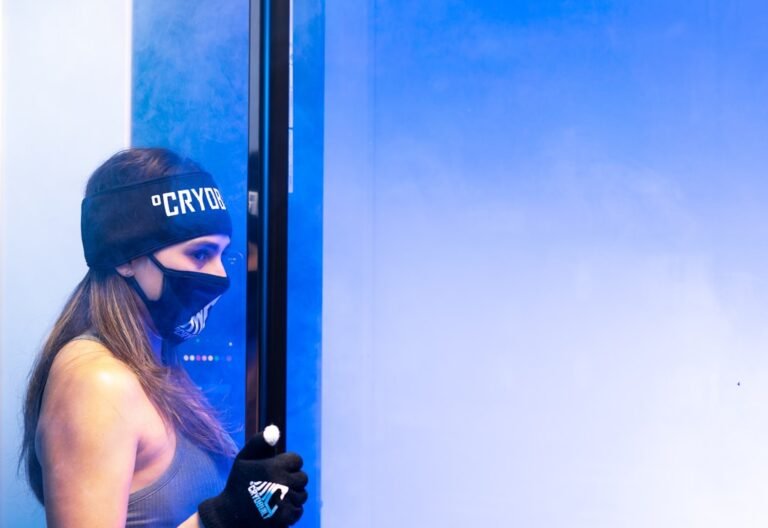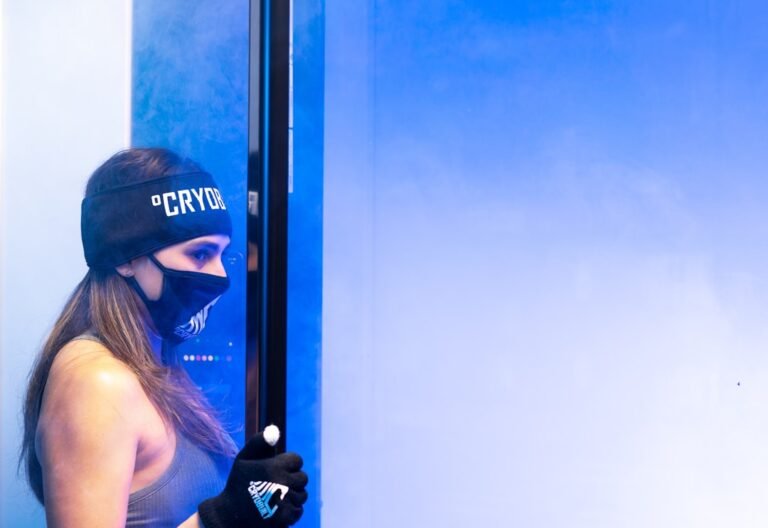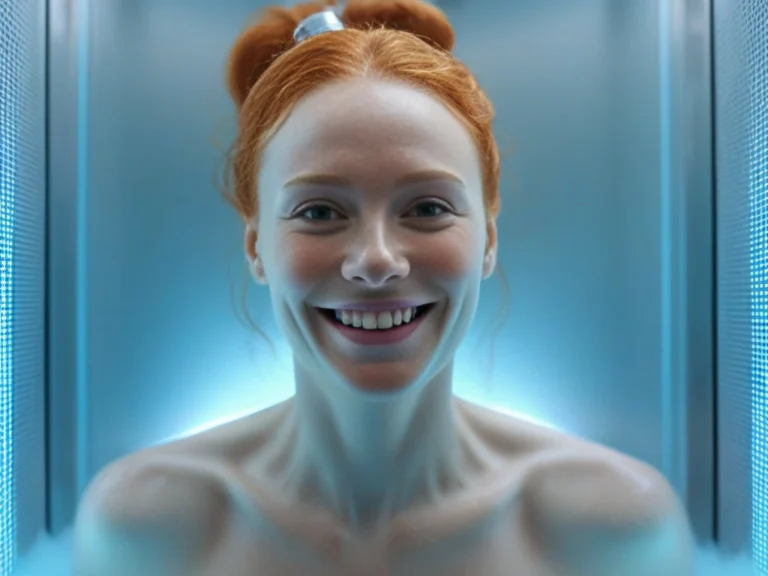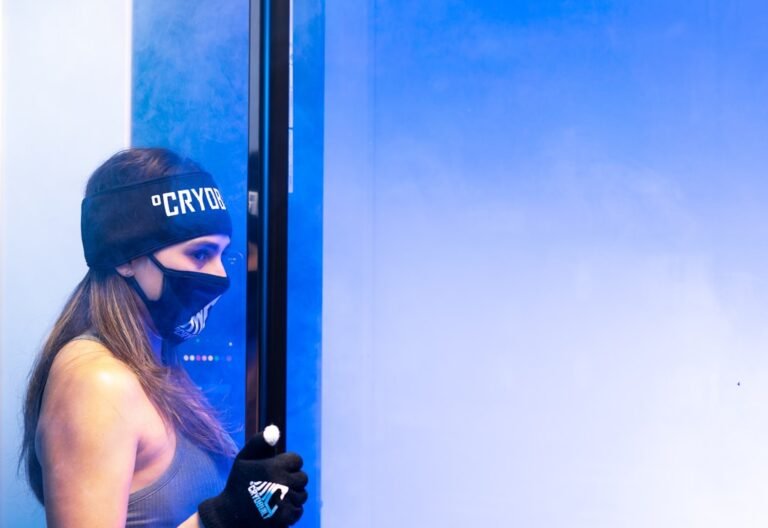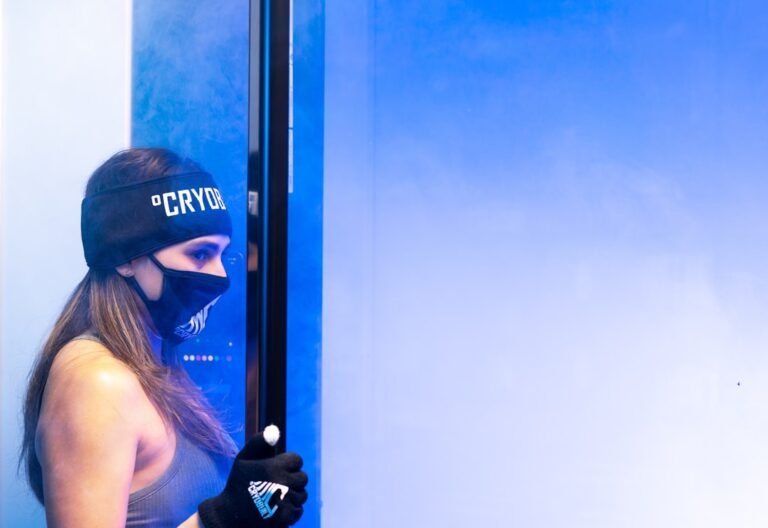Cryotherapy Glossary: Master the Language Before Your London Session
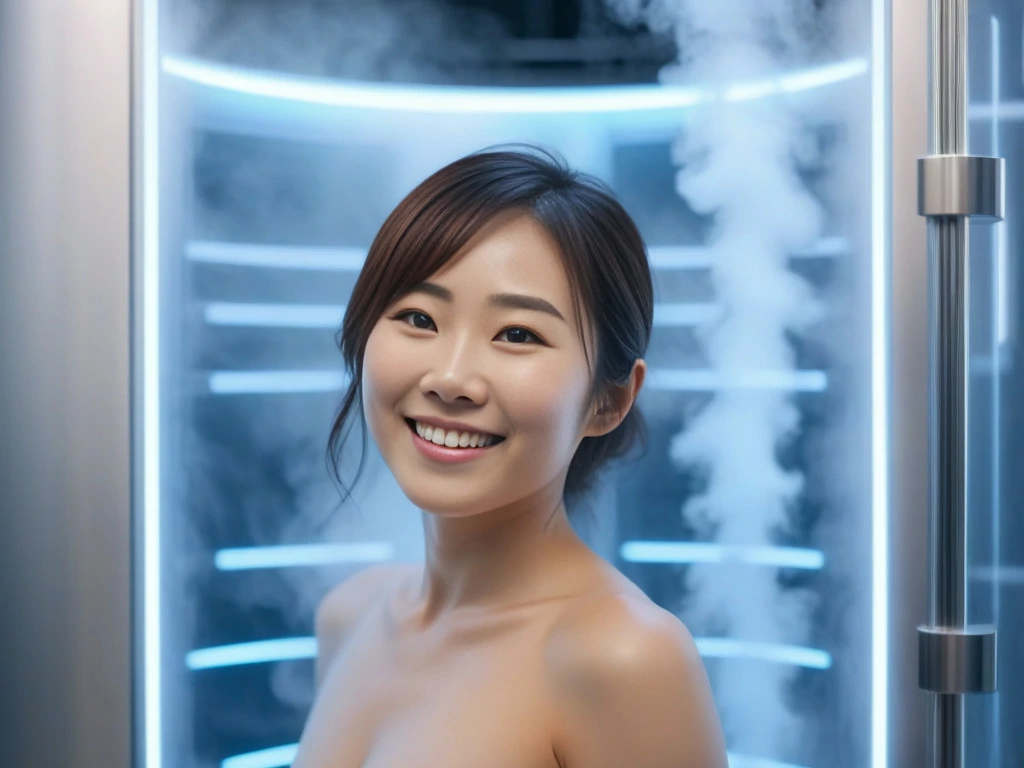
Cryotherapy, derived from the Greek words “cryo” meaning cold and “therapy” meaning treatment, is a therapeutic technique that involves exposing the body to extremely cold temperatures for a short period of time. This treatment has gained popularity in recent years due to its potential health benefits and its use by athletes and celebrities.
The history of cryotherapy dates back to ancient times, where cold water baths were used to treat various ailments. However, it wasn’t until the 1970s that whole body cryotherapy was developed in Japan by Dr. Toshima Yamaguchi as a treatment for rheumatoid arthritis. Since then, cryotherapy has been used for a wide range of conditions including pain relief, inflammation reduction, and improved athletic performance.
In recent years, cryotherapy has gained popularity as a wellness trend, with many spas and wellness centers offering cryotherapy treatments. Celebrities and athletes have also embraced cryotherapy as a way to enhance their performance and recovery. With its growing popularity, it is important to understand the science behind cryotherapy and its potential benefits.
Summary
- Cryotherapy is a treatment that involves exposing the body to extremely cold temperatures.
- Cryotherapy works by triggering the body’s natural healing response and reducing inflammation.
- There are different types of cryotherapy, including whole body and localized treatments.
- Cryotherapy can provide benefits such as pain relief and improved skin health, but there are also potential risks to consider.
- It’s important to take precautions and follow aftercare tips to ensure a safe and effective recovery from cryotherapy.
The Science Behind Cryotherapy: How it Works
Cryotherapy works by exposing the body to extremely cold temperatures, typically ranging from -110°C to -160°C (-166°F to -256°F), for a short period of time, usually 2-3 minutes. This extreme cold triggers a physiological response in the body, leading to various effects.
One of the main effects of cryotherapy is vasoconstriction, which is the narrowing of blood vessels in response to cold temperatures. This vasoconstriction helps to reduce inflammation and swelling in the body, which can provide pain relief for conditions such as arthritis or muscle soreness.
In addition to reducing inflammation, cryotherapy also stimulates the release of endorphins, which are natural painkillers produced by the body. This can help to alleviate pain and improve mood. Cryotherapy has also been shown to boost the immune system by increasing the production of white blood cells, which are responsible for fighting off infections and diseases.
Types of Cryotherapy: From Whole Body to Localised
There are different types of cryotherapy treatments available, ranging from whole body cryotherapy to localised cryotherapy.
Whole body cryotherapy involves exposing the entire body to extreme cold temperatures in a specially designed chamber or sauna. The individual stands in the chamber wearing minimal clothing, usually shorts and a tank top, and is surrounded by cold air or nitrogen gas. The temperature inside the chamber can reach as low as -160°C (-256°F). The individual remains in the chamber for a short period of time, typically 2-3 minutes.
Localised cryotherapy, on the other hand, targets specific areas of the body with cold temperatures. This can be done using ice packs, ice baths, or cryotherapy devices that emit cold air or liquid nitrogen. Localised cryotherapy is often used to treat injuries or areas of pain and inflammation.
Cryotherapy Benefits: From Pain Relief to Improved Skin Health
Cryotherapy has been touted for its numerous potential benefits, ranging from pain relief to improved athletic performance and enhanced skin health.
One of the main benefits of cryotherapy is its ability to provide pain relief and reduce inflammation. The extreme cold temperatures help to constrict blood vessels and reduce swelling, which can alleviate pain caused by conditions such as arthritis, muscle soreness, or injuries. Cryotherapy has also been shown to release endorphins, which are natural painkillers produced by the body.
In addition to pain relief, cryotherapy has been used by athletes to enhance their performance and recovery. The cold temperatures help to reduce muscle fatigue and soreness, allowing athletes to train harder and recover faster. Cryotherapy has also been shown to improve circulation and oxygenation, which can enhance athletic performance.
Another benefit of cryotherapy is its potential for improving skin health and appearance. The cold temperatures help to tighten the skin and reduce the appearance of wrinkles and fine lines. Cryotherapy has also been shown to stimulate collagen production, which can improve the elasticity and firmness of the skin. Additionally, cryotherapy can help to reduce inflammation and redness, making it beneficial for individuals with conditions such as acne or rosacea.
There is also emerging research suggesting that cryotherapy may have potential benefits for mental health. The extreme cold temperatures can trigger the release of endorphins, which can improve mood and reduce symptoms of depression and anxiety. Cryotherapy has also been shown to activate the parasympathetic nervous system, which is responsible for promoting relaxation and reducing stress.
Cryotherapy Risks: Understanding the Potential Dangers
While cryotherapy is generally considered safe, there are potential risks and side effects that individuals should be aware of. It is important to follow safety guidelines and consult with a healthcare provider before trying cryotherapy.
One of the main risks of cryotherapy is frostbite or cold burns. Exposing the body to extremely cold temperatures for too long can cause damage to the skin and underlying tissues. It is important to follow the recommended exposure times and wear protective clothing, such as gloves and socks, to minimize the risk of frostbite.
Other potential side effects of cryotherapy include dizziness, lightheadedness, or fainting. This can occur due to the extreme cold temperatures or changes in blood pressure. It is important to listen to your body during a cryotherapy session and communicate any discomfort or symptoms to the staff.
Individuals with certain medical conditions should avoid cryotherapy or consult with a healthcare provider before trying it. This includes individuals with cardiovascular disease, Raynaud’s disease, uncontrolled high blood pressure, or cold allergies. Pregnant women and children should also avoid cryotherapy due to the potential risks.
Cryotherapy Equipment: From Cryosaunas to Cryo Chambers
There are different types of cryotherapy equipment available, ranging from cryosaunas to cryo chambers. The type of equipment used can vary depending on the location and the specific needs of the individual.
Cryosaunas are small chambers or pods that are designed for whole body cryotherapy. The individual stands inside the chamber wearing minimal clothing and is surrounded by cold air or nitrogen gas. Cryosaunas are often used in spas and wellness centers and can accommodate one person at a time.
Cryo chambers, on the other hand, are larger chambers that can accommodate multiple people at once. These chambers are often used in professional sports facilities or wellness centers and provide a more spacious and immersive experience. Cryo chambers typically use liquid nitrogen to create the extreme cold temperatures.
There are also at-home cryotherapy devices available for individuals who prefer to do cryotherapy in the comfort of their own homes. These devices can range from handheld cryotherapy devices to cryo wraps or ice packs. It is important to follow the instructions provided with these devices and consult with a healthcare provider before using them.
Cryotherapy Session: What to Expect During Your London Appointment
If you decide to try cryotherapy, it is important to know what to expect during your appointment. Here is a step-by-step guide to a cryotherapy session:
1. Consultation: Before your first cryotherapy session, you will likely have a consultation with a trained professional who will assess your medical history and determine if cryotherapy is safe for you.
2. Preparation: On the day of your appointment, it is important to wear minimal clothing, such as shorts and a tank top, as you will be exposed to extreme cold temperatures. You may also be provided with gloves, socks, and slippers to protect your extremities.
3. Pre-session instructions: Before entering the cryotherapy chamber or sauna, you will be given instructions on how to properly prepare for the session. This may include removing any jewelry or metal objects, as they can become extremely cold and cause discomfort.
4. Cryotherapy session: Once you are ready, you will enter the cryotherapy chamber or sauna and the cold air or nitrogen gas will be released. You will typically spend 2-3 minutes in the chamber, during which time you may feel a cold sensation and possibly some discomfort.
5. Post-session instructions: After the session, you will be given instructions on how to properly recover and maximize the benefits of cryotherapy. This may include avoiding hot showers or baths immediately after the session and staying hydrated.
Cryotherapy Precautions: Who Should Avoid Cryotherapy
While cryotherapy is generally safe for most individuals, there are certain precautions that should be taken into consideration. It is important to consult with a healthcare provider before trying cryotherapy, especially if you have any underlying medical conditions.
Individuals with cardiovascular disease, including high blood pressure or heart conditions, should avoid cryotherapy or consult with a healthcare provider before trying it. The extreme cold temperatures can cause changes in blood pressure and heart rate, which can be dangerous for individuals with cardiovascular issues.
Individuals with Raynaud’s disease should also avoid cryotherapy, as the extreme cold temperatures can trigger symptoms such as numbness and tingling in the fingers and toes. Cryotherapy can also worsen symptoms for individuals with cold allergies or sensitivities.
Pregnant women and children should avoid cryotherapy due to the potential risks. The effects of extreme cold temperatures on pregnancy are not well understood, and it is best to err on the side of caution. Children’s bodies are still developing and may not be able to tolerate the extreme cold temperatures.
Cryotherapy Aftercare: Tips for a Safe and Effective Recovery
After a cryotherapy session, it is important to take proper care of your body to ensure a safe and effective recovery. Here are some tips for aftercare following a cryotherapy session:
1. Stay hydrated: It is important to drink plenty of water after a cryotherapy session to rehydrate your body. The extreme cold temperatures can cause dehydration, so it is important to replenish your fluids.
2. Avoid hot showers or baths: After a cryotherapy session, it is best to avoid hot showers or baths for at least an hour. The extreme cold temperatures can cause the blood vessels in your skin to constrict, and exposing them to hot water too soon can cause discomfort or even damage.
3. Listen to your body: Pay attention to how your body feels after a cryotherapy session. If you experience any discomfort or unusual symptoms, it is important to communicate them to the staff or seek medical attention if necessary.
4. Take it easy: While cryotherapy can provide pain relief and improve athletic performance, it is still important to listen to your body and not overexert yourself. Give your body time to recover and adjust before engaging in intense physical activity.
Cryotherapy FAQs: Answering Common Questions About This Treatment
1. How often should you do cryotherapy?
The frequency of cryotherapy sessions can vary depending on the individual and their specific needs. Some individuals may benefit from daily sessions, while others may find that once or twice a week is sufficient. It is best to consult with a healthcare provider or a trained professional to determine the appropriate frequency for you.
2. Is cryotherapy safe for everyone?
While cryotherapy is generally safe for most individuals, there are certain precautions that should be taken into consideration. Individuals with cardiovascular disease, Raynaud’s disease, uncontrolled high blood pressure, or cold allergies should avoid cryotherapy or consult with a healthcare provider before trying it. Pregnant women and children should also avoid cryotherapy due to the potential risks.
3. How long do the benefits of cryotherapy last?
The duration of the benefits of cryotherapy can vary depending on the individual and their specific condition. Some individuals may experience immediate pain relief or improved athletic performance that lasts for several hours or days. Others may require regular sessions to maintain the benefits. It is best to consult with a healthcare provider or a trained professional to determine the appropriate frequency and duration of cryotherapy for you.
In conclusion, cryotherapy is a therapeutic technique that involves exposing the body to extremely cold temperatures for a short period of time. It has gained popularity in recent years due to its potential health benefits, including pain relief, improved athletic performance, enhanced skin health, and potential benefits for mental health. While cryotherapy is generally considered safe, it is important to follow safety guidelines and consult with a healthcare provider before trying it, especially if you have any underlying medical conditions. With proper precautions and aftercare, cryotherapy can be a safe and effective treatment option for individuals seeking pain relief, improved performance, or enhanced skin health.

